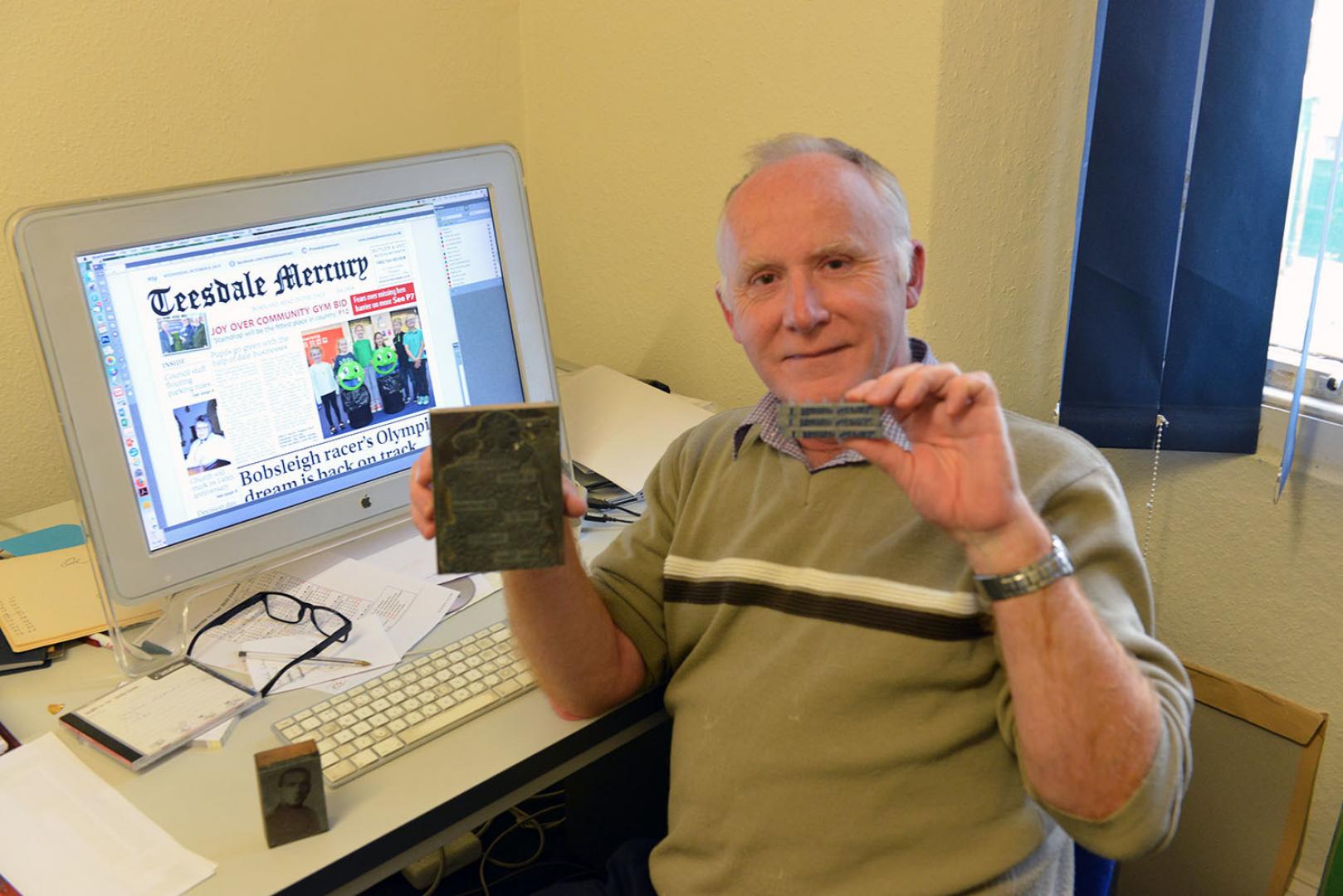A TEESDALE Mercury stalwart is celebrating 40 years with the newspaper this month.
Little did David Croom realise when he joined the Mercury on October 8, 1979, that he would see not one, but three major printing revolutions during the next four decades.
He joined as an apprentice compositor at 16 and began learning how to produce the newspaper.
The 56-year-old, who now works in the studio department, said: “When I started in the late 1970s, the technology hadn’t changed since the invention of the linotype which was in the early 1900s. Since then every decade after that there was a change.”
Things may have gone a lot differently for the former Teesdale School pupil had he stuck with his initial dream of becoming a social worker, but decided it was not for him after only three weeks at college in Darlington.
Instead, he responded to an advert in the Teesdale Mercury, the newspaper that had been a weekly staple in his family’s life for years, and he was taken on as an apprentice.
He was trained in the process of setting and composing the newspaper in hot lead.
Working conditions were not ideal.
Mr Croom said: “It was hot, dirty and smelly. You constantly worked in the smog of lead fumes. One of my jobs as an apprentice was to melt all the lead. I was a bit unlucky because I was the last apprentice.
“Although I qualified as a journeyman after four years, as the youngest I still had to do all the apprentice jobs for another five or six years.”
Computers brought about a revolution in the 1980s where columns of text were printed out, then cut by the compositors and pasted onto large sheets using hot wax. A Rotary klischograph was used to create the photographs.
Mr Croom said: “It became one of my jobs to do the photographs. We would tape a photograph to a cylinder and as it turned the lens picked up the information. On the other side a needle scratched the image onto the surface of the plastic.
They were clever machines. I never fully understood how it worked, but I did become quite proficient at it.”
The final revolution came about a decade later when desktop publishing arrived and the complete layout of the newspaper was done entirely on computer.
Apart from compositing, Mr Croom learned a number of other jobs in the print room, including running the printing press. He said: “Because we were such a small outfit with a small staff they liked you to do a bit of everything. I never liked that side of things, the press side of it, but we all had to do a bit of everything.”
A cherished memory of his time was meeting his partner of 20 years, Margaret Stubley, who joined as the newspaper’s first ever advertising representative. Sadly she died in 2015 after being diagnosed with multiple sclerosis.
Another bitter-sweet moment came in 2015.
Mr Croom said: “That was the demise of us printing the paper ourselves. That was quite sad, but it had its advantages because we could print in colour which we couldn’t before. It was like a double edged sword.”
As the longest serving employee of the newspaper, Mr Croom remembers the many people who have come and gone over the years.
He said: “There have been a lot of characters. In fact they were all characters when I started out. Some of the print shop men were heavy drinkers. You learned as an apprentice not to pester them too early. Times were different then.”
When not behind his computer on the top floor of the Mercury’s offices, putting together adverts and making sure the paper’s production runs smoothly, Mr Croom enjoys researching local history and genealogy.
In the past he has written several local history items for the Teesdale Mercury’s Remember When page and readers can look forward to more in the future.
Teesdale Mercury editor Trevor Brookes said: “I have worked alongside David for 11 years and Teesdale Mercury print runs through his veins. Congratulations on reaching 40 years David.”






